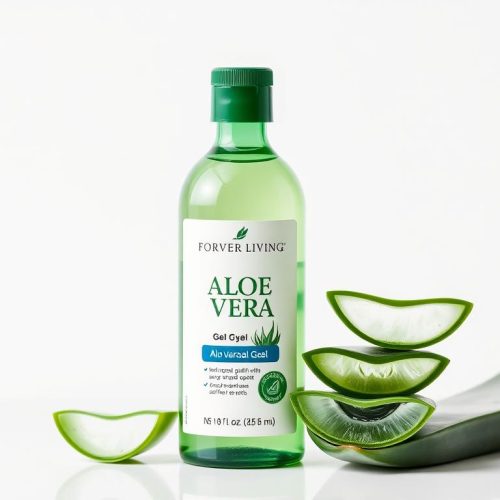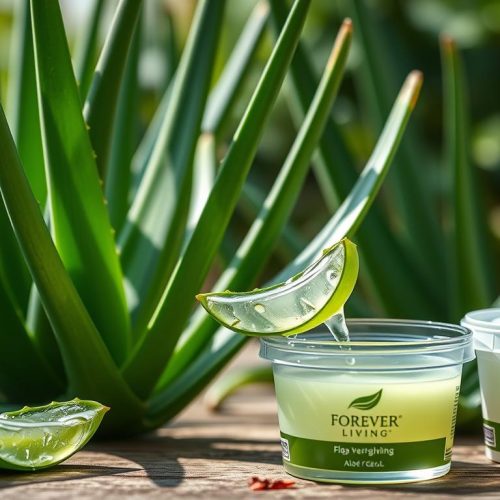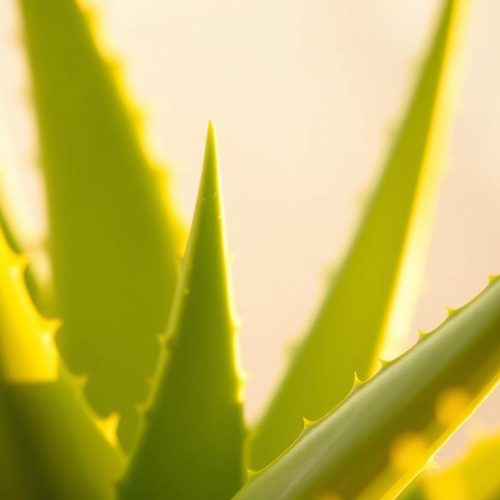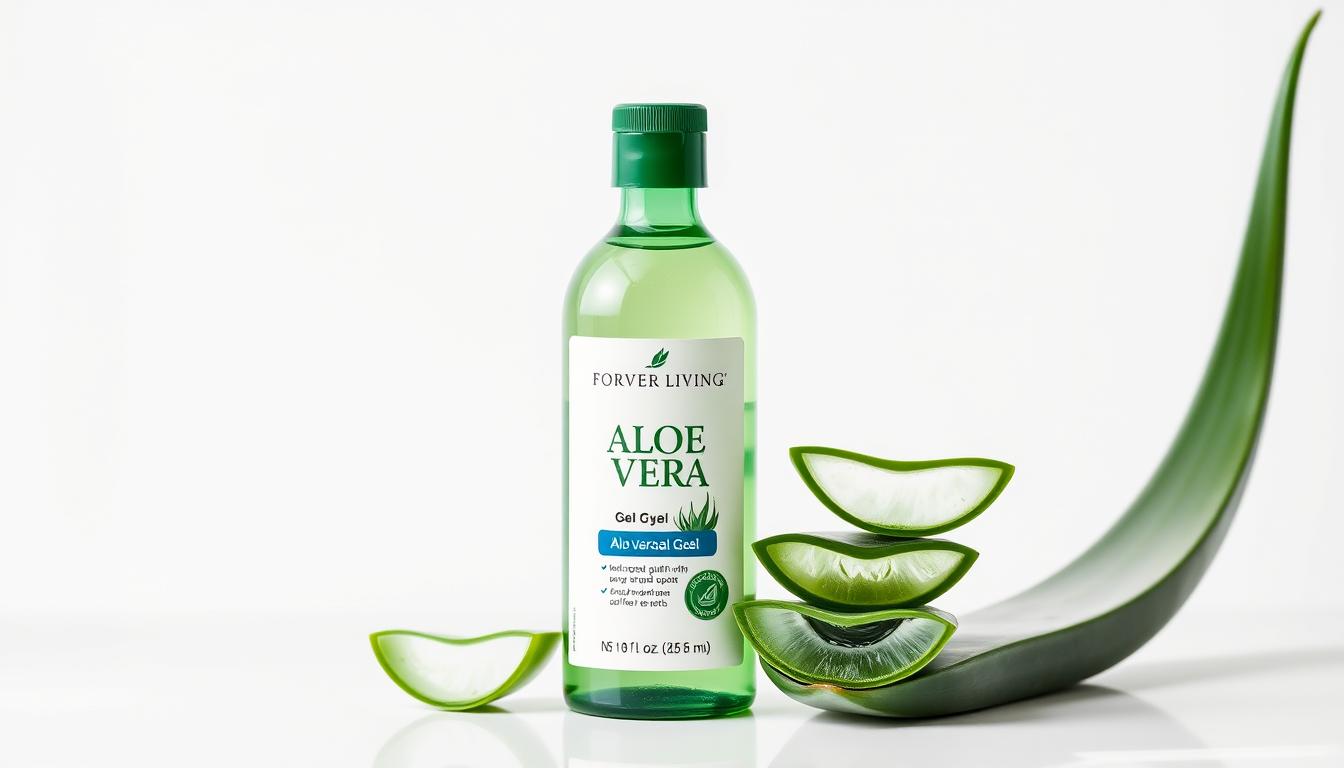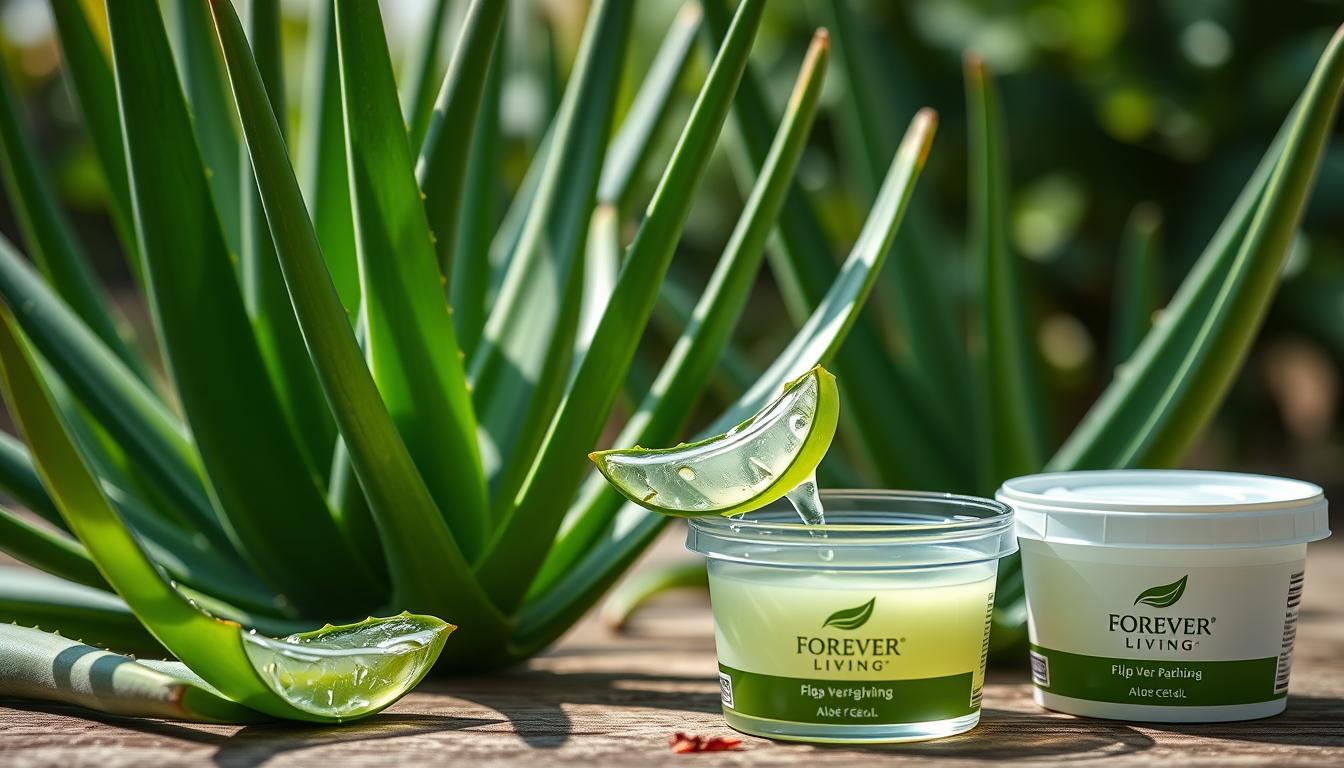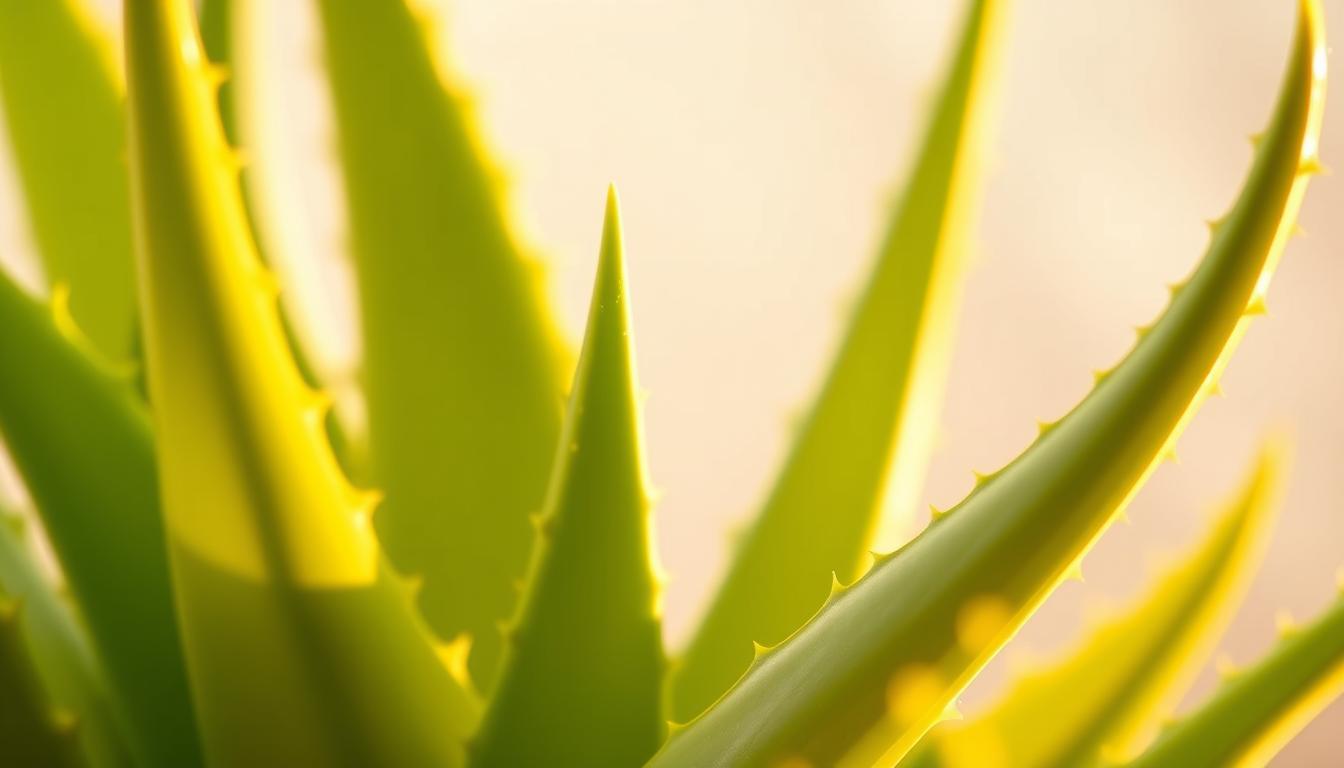Did you know that aloe vera has been used for centuries for its medicinal and nutritional properties? This nutrient-rich plant is not only beneficial for skin health but also offers numerous benefits when consumed as part of a balanced diet.
Incorporating aloe vera into your daily routine can be simple and delicious. From refreshing drinks to savory dishes, there are countless ways to enjoy the benefits of this versatile superplant.
- The Ancient Superfood Making a Modern Comeback
- Understanding Aloe Vera as a Nutritional Powerhouse
- Science-Backed Health Benefits of Consuming Aloe Vera
- Safety First: Identifying Edible Aloe Vera Varieties
- How to Properly Prepare Aloe Vera for Consumption
- Store-Bought vs. Fresh: Choosing Your Aloe Vera Source
- Refreshing Aloe Vera Beverages
- Incorporating Aloe Vera into Savory Dishes
- Sweet Treats and Desserts with Aloe Vera
- Aloe Vera in Your Diet: Practical Meal Plans and Daily Integration
- Troubleshooting Common Issues with Edible Aloe
- Conclusion: Making Aloe Vera a Sustainable Part of Your Wellness Routine
- FAQ
- What is the best way to eat aloe vera?
- How do I prepare aloe vera for consumption?
- What are the benefits of drinking aloe vera juice?
- Can I use store-bought aloe vera gel in my diet?
- How can I incorporate aloe vera into my daily meals?
- What are some aloe vera recipes I can try?
- How do I deal with the bitterness of aloe vera?
- Can I grow my own aloe vera for consumption?
- How should I store aloe vera gel to maintain freshness?
- The Ancient Superfood Making a Modern Comeback
- Understanding Aloe Vera as a Nutritional Powerhouse
- Science-Backed Health Benefits of Consuming Aloe Vera
- Safety First: Identifying Edible Aloe Vera Varieties
- How to Properly Prepare Aloe Vera for Consumption
- Store-Bought vs. Fresh: Choosing Your Aloe Vera Source
- Refreshing Aloe Vera Beverages
- Incorporating Aloe Vera into Savory Dishes
- Sweet Treats and Desserts with Aloe Vera
- Aloe Vera in Your Diet: Practical Meal Plans and Daily Integration
- Troubleshooting Common Issues with Edible Aloe
- Conclusion: Making Aloe Vera a Sustainable Part of Your Wellness Routine
- FAQ
- What is the best way to eat aloe vera?
- How do I prepare aloe vera for consumption?
- What are the benefits of drinking aloe vera juice?
- Can I use store-bought aloe vera gel in my diet?
- How can I incorporate aloe vera into my daily meals?
- What are some aloe vera recipes I can try?
- How do I deal with the bitterness of aloe vera?
- Can I grow my own aloe vera for consumption?
- How should I store aloe vera gel to maintain freshness?
Key Takeaways
- Discover the nutritional benefits of consuming aloe vera
- Explore creative ways to incorporate aloe vera into your diet
- Learn about the versatility of aloe vera in various recipes
- Understand how aloe vera supports digestive health and immune function
- Find inspiration for making aloe vera a part of your daily routine
The Ancient Superfood Making a Modern Comeback
For thousands of years, aloe vera has been utilized for its nutritional and medicinal properties, making it a revered plant across various cultures. Its versatility and health benefits have cemented its place in traditional medicine and cuisine.
Aloe vera’s historical use as a food source is well-documented. In ancient Egypt, it was consumed for its health benefits, while in traditional Indian medicine, it was used to treat various ailments. The gel of the aloe vera plant was eaten raw or cooked, and it was also used in beverages for its soothing properties.
Historical Uses of Aloe Vera as Food
Aloe vera has been a part of culinary traditions in many cultures. In ancient times, it was used not only for its medicinal properties but also as a food ingredient. The gel was consumed directly or incorporated into various dishes.
Traditional Uses:
- Consumed raw or cooked
- Used in traditional beverages
- Incorporated into desserts and sweet dishes
A table illustrating the historical use of aloe vera in different cultures is provided below:
| Culture | Use of Aloe Vera |
|---|---|
| Egyptian | Consumed for health benefits |
| Indian | Used in traditional medicine |
| Chinese | Incorporated into beverages and desserts |
Why Aloe Vera is Trending in Modern Nutrition
In recent years, aloe vera has seen a resurgence in popularity due to its nutritional profile and health benefits. The benefits of drinking aloe vera include improved digestion and hydration. The edible aloe vera gel is rich in vitamins, minerals, and antioxidants, making it a sought-after ingredient in modern nutrition.
Aloe vera’s trend in modern nutrition can be attributed to its versatility in being consumed as juices, smoothies, or added to various dishes. Its natural health benefits and the growing interest in wellness have contributed to its increased popularity.
The modern comeback of aloe vera is not just about revisiting traditional practices but also about innovating new ways to incorporate its benefits into daily life.
Understanding Aloe Vera as a Nutritional Powerhouse
As a nutritional powerhouse, aloe vera offers a rich blend of vitamins, minerals, and other beneficial compounds. Incorporating aloe vera gel into your diet can significantly enhance your nutritional intake.
Essential Vitamins and Minerals in Aloe
Aloe vera is a rich source of essential vitamins, including vitamins A, C, E, and B12. These vitamins play crucial roles in maintaining healthy skin, supporting immune function, and promoting overall well-being. Additionally, aloe vera contains important minerals such as calcium and magnesium, which are vital for bone health and various bodily functions.
Vitamins and Minerals in Aloe Vera
| Nutrient | Role in the Body |
|---|---|
| Vitamin A | Supports skin health and immune function |
| Vitamin C | Boosts immunity and antioxidant activity |
| Vitamin E | Acts as an antioxidant, protecting cells from damage |
| Vitamin B12 | Essential for nerve function and red blood cell formation |
| Calcium | Crucial for bone health and muscle function |
| Magnesium | Important for muscle and nerve function, as well as bone health |
Amino Acids and Enzymes for Optimal Health
Aloe vera contains a variety of amino acids, which are the building blocks of proteins. These amino acids are essential for numerous bodily functions, including the repair and growth of tissues. Aloe vera also contains several enzymes that aid in digestion and help break down food, ensuring optimal nutrient absorption.
Bioactive Compounds and Their Functions
Aloe vera is rich in bioactive compounds that contribute to its health benefits. These compounds include anthraquinones, which have laxative properties, and polysaccharides, which support immune function. The bioactive compounds in aloe vera work synergistically to promote overall health and well-being.
Science-Backed Health Benefits of Consuming Aloe Vera
Scientific investigations have unveiled the potential of aloe vera in promoting overall health and wellness. The consumption of aloe vera is associated with numerous health benefits, ranging from improved digestive health to enhanced immune function.
Digestive Health
Aloe vera has been shown to have a positive impact on digestive health, particularly in soothing symptoms of Irritable Bowel Syndrome (IBS) and reducing bloating. The anti-inflammatory properties of aloe vera help in calming the digestive tract, promoting a healthy gut.
Key Benefits for Digestive Health:
- Reduces symptoms of IBS
- Decreases bloating and gas
- Promotes healing of the gut lining
Natural Detoxification
Aloe vera is also recognized for its natural detoxification properties. It aids in cleansing the body by promoting the elimination of toxins and supporting the body’s natural cleansing processes.
Detoxification Process:
| Organ/System | Detoxification Effect |
|---|---|
| Liver | Enhances the removal of toxins |
| Digestive System | Cleanses the gut and promotes healthy flora |
| Kidneys | Supports the elimination of waste products |
Immune System Support
The immune system support provided by aloe vera is largely attributed to its content of acemannan, a complex carbohydrate that has been shown to stimulate the immune system, enhancing the body’s natural defense mechanisms.
Skin Health Benefits
Consuming aloe vera can also have beneficial effects on skin health. The antioxidants and vitamins present in aloe vera help in reducing oxidative stress and inflammation, promoting healthier skin.
Skin Health Advantages:
- Reduces inflammation and promotes healing
- Enhances skin hydration and elasticity
- Protects against sun damage
Safety First: Identifying Edible Aloe Vera Varieties
The key to safely incorporating aloe vera into your diet lies in identifying the right variety. While aloe vera is widely known for its health benefits, not all aloe vera species are created equal, and some can be toxic.
Aloe Barbadensis Miller: The Edible Standard
Aloe barbadensis Miller, commonly known as aloe vera, is widely recognized as the edible standard. This variety is rich in vitamins, minerals, and other beneficial compounds that contribute to its health-promoting properties. When selecting aloe vera for consumption, it’s crucial to ensure that you are using Aloe barbadensis Miller.
To verify the authenticity and safety of your aloe vera, consider the following characteristics of Aloe barbadensis Miller:
- Thick, fleshy leaves
- Gel-filled interior
- Minimal latex content
Avoiding Ornamental and Toxic Varieties
Many aloe vera varieties are grown for ornamental purposes and are not safe for consumption. Varieties like Aloe vera var. chinensis and Aloe striatula are not considered edible and can cause adverse health effects if ingested. It’s essential to distinguish between edible and non-edible aloe vera types to avoid potential health risks.
| Aloe Vera Variety | Edibility | Characteristics |
|---|---|---|
| Aloe barbadensis Miller | Edible | Thick, fleshy leaves; gel-filled interior |
| Aloe vera var. chinensis | Not Edible | Smaller leaves; higher latex content |
| Aloe striatula | Not Edible | Long, thin leaves; not typically used for consumption |
Understanding Aloe Plant Anatomy for Safe Consumption
Understanding the anatomy of the aloe vera plant is crucial for safe consumption. The aloe vera leaf consists of two main parts: the outer latex layer and the inner gel. The latex layer contains aloin, a compound that can cause digestive issues if ingested in large quantities. Properly identifying and separating these components is essential for safe consumption.
By focusing on Aloe barbadensis Miller and understanding the anatomy of the aloe vera plant, you can safely incorporate aloe vera into your diet and enjoy its numerous health benefits.
How to Properly Prepare Aloe Vera for Consumption
Unlocking the potential of aloe vera as a nutritious addition to your diet starts with learning how to prepare it correctly. Proper preparation is key to safely enjoying the benefits of this ancient superfood.
Harvesting and Selecting Mature Aloe Leaves
The first step in preparing aloe vera is harvesting mature leaves. It’s essential to select leaves that are firm, plump, and free from any signs of damage or decay. Mature leaves typically have a more pronounced gel content, making them ideal for consumption.
When harvesting, use a sharp knife to cut the leaf from the base of the plant. This method helps prevent damage to the plant and ensures a clean cut. Choose leaves from the outer part of the plant, as they are generally older and have a higher gel content.
Removing the Aloin-Containing Yellow Latex
One of the critical steps in preparing aloe vera for consumption is removing the yellow latex, which contains aloin. Aloin can cause digestive issues if ingested in large quantities. To remove the latex, carefully slice off the serrated edges of the leaf and then peel back the outer layer, exposing the clear gel inside.
Rinsing the gel under cold running water can help remove any remaining latex residue. This step is crucial for minimizing the risk of adverse reactions.
Extracting and Cleaning the Gel
Once the latex is removed, the next step is to extract the aloe vera gel. Use a spoon to scoop out the gel, or slice the leaf into manageable pieces and then extract the gel. It’s essential to clean the gel thoroughly to remove any remaining latex or other contaminants.
Proper cleaning involves rinsing the gel in cold water and then patting it dry with a clean cloth or paper towel. This process ensures that the gel is clean and ready for consumption.
Store-Bought vs. Fresh: Choosing Your Aloe Vera Source
Aloe vera, a versatile and nutritious addition to modern diets, can be sourced in various forms, each with its own set of advantages. Whether you prefer the convenience of store-bought products or the control of growing your own aloe vera, understanding the pros and cons of each source is crucial.
Evaluating Commercial Aloe Products for Quality
When selecting store-bought aloe vera products, quality can vary significantly between brands. To ensure you’re getting a high-quality product, look for the following:
- Certifications: Opt for products that have been certified by reputable third-party organizations.
- Ingredient List: Be wary of products with long lists of additional ingredients, as they may contain additives or preservatives.
- Concentration: Check the concentration of aloe vera in the product. Higher concentrations typically indicate a more potent product.
To further illustrate the differences, consider the following comparison:
| Product Type | Aloe Vera Concentration | Additives | Certification |
|---|---|---|---|
| Aloe Vera Juice | 99% | None | Yes |
| Aloe Vera Gel | 95% | Preservatives | No |
| Aloe Vera Supplement | 80% | Fillers | Yes |
What to Look for on Labels: Additives to Avoid
When examining the labels of commercial aloe vera products, there are several additives to be cautious of:
- Artificial Flavors and Colors: These can detract from the natural health benefits of aloe vera.
- Preservatives: While they extend shelf life, some preservatives can have adverse health effects.
- Unnecessary Fillers: These can dilute the concentration of aloe vera and add unnecessary calories or ingredients.
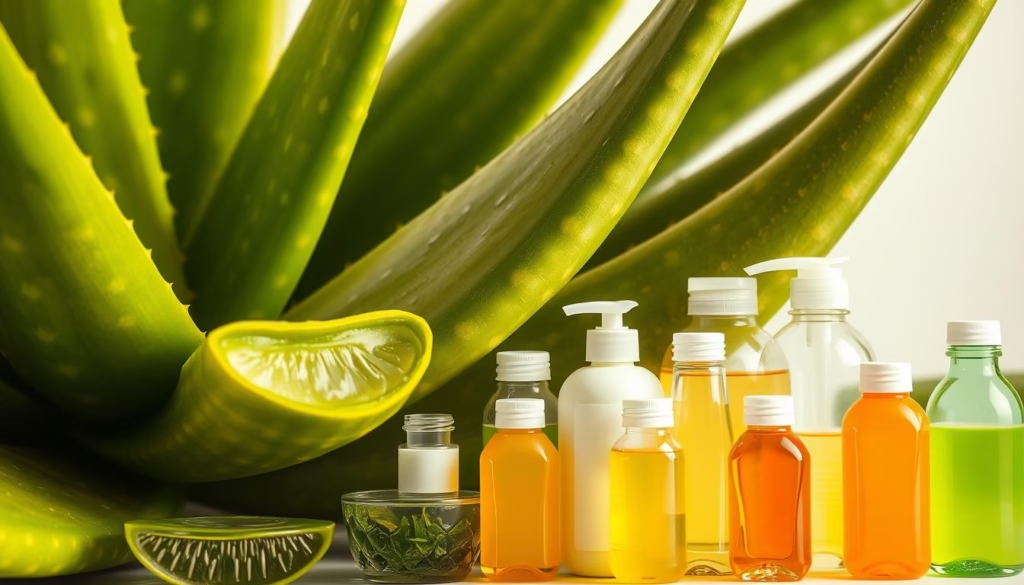
Benefits of Growing Your Own Aloe Plants
Growing your own aloe vera plants offers several benefits, including:
- Control Over Quality: By growing your own aloe, you can ensure it’s free from additives and processed correctly.
- Freshness: Freshly harvested aloe vera is more potent and nutritious than store-bought alternatives.
- Cost-Effective: Once established, aloe vera plants are relatively low maintenance and can provide a continuous supply.
By understanding the advantages and disadvantages of different aloe vera sources, you can make informed decisions that best suit your dietary needs and preferences.
Refreshing Aloe Vera Beverages
Aloe vera is not just for skin care; it’s also a fantastic ingredient for refreshing drinks. Incorporating aloe vera into your beverage routine can provide a boost of hydration and nutrition.
Simple Aloe Water and Infusions
Start with the basics by making aloe vera water. Simply mix aloe vera gel with water, and you have a refreshing, hydrating drink. For added flavor, try infusing your aloe water with fruits, herbs, or cucumber.
- Lemon and mint aloe water for a refreshing twist
- Cucumber and lime for a light, crisp taste
- Berry-infused aloe water for a sweet treat
Nutrient-Packed Aloe Vera Smoothies
Blend aloe vera gel with your favorite fruits and vegetables to create nutrient-packed smoothies. Aloe vera adds a smooth texture and a boost of vitamins and minerals.
| Smoothie | Ingredients | Benefits |
|---|---|---|
| Tropical Green | Aloe vera, spinach, pineapple, coconut water | Rich in antioxidants and electrolytes |
| Berry Bliss | Aloe vera, mixed berries, banana, almond milk | High in vitamins and fiber |
| Mango Madness | Aloe vera, mango, yogurt, honey | Good source of probiotics and vitamin C |
Aloe Cocktails and Mocktails for Special Occasions
Elevate your gatherings with aloe vera cocktails and mocktails. Aloe vera adds a unique texture and flavor to drinks, making them perfect for special occasions.
Try mixing aloe vera gel with sparkling wine, fruit juice, and a splash of grenadine for a refreshing cocktail. For a mocktail, blend aloe vera with fruit juice and a bit of honey for a sweet treat.
Experimenting with aloe vera in your beverages not only adds variety to your drink options but also provides numerous health benefits. From simple infusions to complex cocktails, aloe vera is a versatile ingredient that can enhance any beverage.
Incorporating Aloe Vera into Savory Dishes
Exploring the use of aloe vera in savory cooking opens up new possibilities for culinary creativity. Aloe vera can add a unique dimension to various dishes, enhancing both their nutritional value and flavor profile.
Aloe in Salads: Texture and Flavor Combinations
Aloe vera can be a refreshing addition to salads, providing a crunchy texture and a subtle flavor. To incorporate aloe vera into salads, simply dice the gel into small cubes and mix with your favorite greens, vegetables, and dressings. For example, combining aloe vera with mixed greens, cherry tomatoes, and a citrus vinaigrette creates a light and refreshing salad.
Stir-Fries and Sautés with Aloe Cubes
Aloe vera cubes can be added to stir-fries and sautés, enhancing the dish with their tender texture and mild flavor. When cooking with aloe vera, it’s essential to add it towards the end of the cooking process to preserve its nutritional properties. Aloe vera pairs well with a variety of stir-fry ingredients, such as bell peppers, onions, and lean proteins.
Soups and Broths Enhanced with Aloe Gel
Aloe vera gel can be used to enrich soups and broths, adding a silky texture and a boost of nutrients. Simply blend the aloe gel into the soup or broth during the last few minutes of cooking. Aloe vera complements a range of soup flavors, from clear broths to creamy soups, and can be particularly soothing in soups designed to support digestive health.
By incorporating aloe vera into savory dishes, home cooks and chefs can create innovative recipes that not only taste great but also offer numerous health benefits. Whether used in salads, stir-fries, or soups, aloe vera proves to be a versatile and nutritious addition to a variety of culinary creations.
Sweet Treats and Desserts with Aloe Vera
Discover the delightful world of aloe vera desserts, where nutrition meets indulgence. Aloe vera, with its subtle flavor and numerous health benefits, can be a fantastic addition to various sweet treats. From jellies and puddings to baked goods and frozen desserts, aloe vera can elevate your dessert game while keeping it healthy.
Aloe Vera Jellies and Puddings
Aloe vera jellies and puddings are refreshing desserts that combine the health benefits of aloe vera with the sweetness of sugar and fruit flavors. To make aloe vera jelly, you can mix aloe vera gel with fruit juice, a sweetener like honey or maple syrup, and a gelling agent such as agar or pectin. For puddings, aloe vera gel can be blended with milk or a non-dairy alternative, sweetener, and flavorings, then thickened with cornstarch or chia seeds.
Nutritional Benefits: Aloe vera adds vitamins, minerals, and anti-inflammatory properties to these desserts, making them not only delicious but also nutritious.
Baked Goods with Aloe as an Egg Substitute
Aloe vera gel can be used as a substitute for eggs in baked goods, making it an excellent option for vegan baking. It adds moisture and helps bind ingredients together. To use aloe vera in baking, replace each egg with 1/4 cup of aloe vera gel. This substitution works well in recipes like cakes, muffins, and cookies.
- Reduce the amount of liquid in the recipe slightly, as aloe vera adds moisture.
- Be mindful of the flavor profile, as aloe vera can add a subtle bitterness that might need balancing with other ingredients.
Frozen Aloe Desserts and Ice Creams
Frozen aloe desserts and ice creams are perfect for hot days, offering a cool and refreshing treat. You can make aloe vera ice cream by blending aloe vera gel with your choice of milk, a sweetener, and flavorings, then freezing the mixture.
Tips for Making Aloe Vera Ice Cream: Ensure the aloe vera gel is smooth and free of any bitter latex to avoid an unpleasant taste. You can also add mix-ins like fruits, nuts, or cocoa nibs to enhance the flavor and texture.
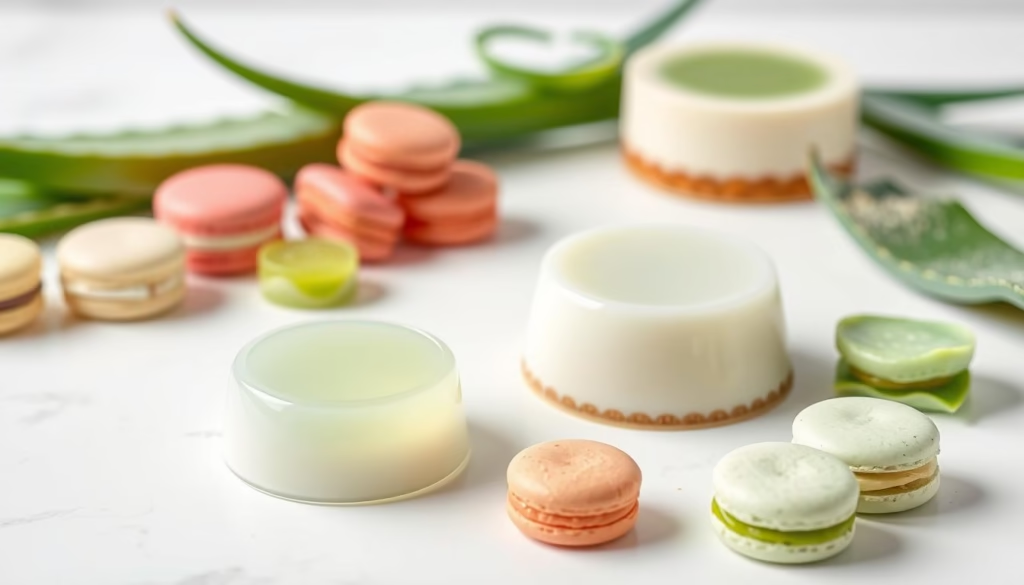
| Dessert Type | Aloe Vera Benefit | Preparation Tip |
|---|---|---|
| Jellies and Puddings | Adds vitamins and anti-inflammatory properties | Use agar or pectin for gelling |
| Baked Goods | Serves as a vegan egg substitute, adds moisture | Replace one egg with 1/4 cup aloe vera gel |
| Frozen Desserts and Ice Creams | Provides a refreshing and healthy treat | Blend aloe vera gel with milk and sweetener, then freeze |
Aloe Vera in Your Diet: Practical Meal Plans and Daily Integration
To reap the benefits of aloe vera, it’s essential to incorporate it into your daily diet in creative ways. Aloe vera can be a versatile addition to various meals, enhancing nutritional value without compromising taste.
Aloe vera’s health benefits make it an excellent supplement to daily meals. It can be consumed in various forms, from juices to smoothies, and even as an ingredient in savory dishes.
Breakfast Ideas: Starting Your Day with Aloe
Starting your day with aloe vera can be both nutritious and delicious. Here are some ideas:
- Add aloe vera gel to your morning smoothie for an extra boost of vitamins and minerals.
- Mix aloe vera juice with your favorite breakfast juice for a refreshing start.
- Incorporate aloe vera into your pancake or waffle batter for a nutritious twist on breakfast classics.
Lunch and Dinner Incorporation Strategies
Incorporating aloe vera into lunch and dinner can be simple and beneficial. Consider the following strategies:
| Meal | Aloe Vera Incorporation Idea |
|---|---|
| Lunch | Add aloe vera gel to salads or use it as a topping for soups. |
| Dinner | Use aloe vera juice as a marinade for grilled meats or vegetables. |
| Both | Mix aloe vera into sauces or dips for an extra nutritional kick. |
Snacks and On-the-Go Aloe Options
Aloe vera makes for a great snack, whether you’re looking for something refreshing or a quick energy boost. Some ideas include:
- Aloe vera juice boxes or bottles for on-the-go hydration.
- Aloe vera-infused energy bars or bites for a healthy snack.
- Freeze-dried aloe vera snacks for a crunchy treat.
By incorporating aloe vera into your daily meal plans, you can enjoy its numerous health benefits while diversifying your diet.
Troubleshooting Common Issues with Edible Aloe
While aloe vera offers numerous health benefits, incorporating it into your diet can sometimes be met with challenges. Understanding how to address these common issues can enhance your overall experience with edible aloe.
Dealing with Bitterness and Aftertaste
One of the most common complaints about consuming aloe vera is its bitter taste or unpleasant aftertaste. This bitterness is often due to the presence of aloin, a compound found in the yellow latex beneath the aloe vera leaf skin. To minimize bitterness, it’s crucial to properly clean and prepare the aloe vera gel.
Proper Preparation Techniques: Ensure that you thoroughly remove the yellow latex layer, as it contains most of the aloin. Soaking the aloe gel in water or a mild citrus juice can also help reduce the bitterness.
Texture Concerns and Culinary Solutions
The gel-like texture of aloe vera can be off-putting to some. Fortunately, there are several culinary strategies to mask or incorporate this texture into various dishes.
- Blend aloe vera gel into smoothies or juices to mask its texture.
- Use aloe vera in soups or stews where it can dissolve and add nutrition without affecting the overall texture.
- Incorporate finely chopped aloe vera into salads or salsas for a refreshing twist.
Experimenting with different recipes can help you find ways to enjoy aloe vera that suit your taste preferences.
Storage and Preservation Tips for Maximum Freshness
To enjoy aloe vera over time, proper storage and preservation are key. Fresh aloe vera gel can be stored in an airtight container in the refrigerator for up to a week.
For longer preservation, consider freezing the aloe vera gel in ice cube trays. Once frozen, these cubes can be transferred to a freezer-safe bag or container for storage up to 6 months. This method allows you to easily add aloe vera to your meals without having to prepare it fresh each time.
By addressing these common issues, you can more comfortably incorporate aloe vera into your diet and enjoy its numerous health benefits.
Conclusion: Making Aloe Vera a Sustainable Part of Your Wellness Routine
Incorporating aloe vera into your diet can be a transformative step towards a sustainable wellness routine. The numerous aloe vera benefits discussed highlight its potential for long-term health benefits. Regular consumption of aloe vera can lead to sustained improvements in digestive health, immune function, and even skin health.
By making aloe vera a part of your daily routine, you can harness its nutritional power to support overall well-being. Whether through refreshing beverages, savory dishes, or sweet treats, the versatility of aloe vera makes it easy to maintain a consistent regimen.
As you continue on your wellness journey, consider the long-term advantages of aloe vera. Its natural detoxification properties and rich nutritional profile make it an excellent addition to a balanced lifestyle. Embracing aloe vera as a staple in your diet can lead to a more sustainable and healthy you.
FAQ
What is the best way to eat aloe vera?
Aloe vera can be consumed in various ways, including drinking aloe vera juice, adding aloe vera gel to smoothies, or incorporating it into savory dishes and desserts. The key is to start with small amounts and adjust to taste.
How do I prepare aloe vera for consumption?
To prepare aloe vera, harvest mature leaves, remove the latex layer containing aloin, and extract the clear gel. Rinse the gel thoroughly to remove any remaining latex, then chop or blend it for use in recipes.
What are the benefits of drinking aloe vera juice?
Drinking aloe vera juice may support digestive health, aid in natural detoxification, boost the immune system, and promote skin health due to its rich content of vitamins, minerals, and bioactive compounds.
Can I use store-bought aloe vera gel in my diet?
Yes, store-bought aloe vera gel can be used, but it’s essential to evaluate the product’s quality, checking for additives, preservatives, and the concentration of aloe vera. Opt for products labeled as “inner gel” or “aloe vera gel” without latex.
How can I incorporate aloe vera into my daily meals?
Aloe vera can be added to breakfast smoothies, used as a base for salad dressings, incorporated into soups, or as a substitute in baked goods. Experiment with different recipes to find enjoyable ways to include aloe vera in your diet.
What are some aloe vera recipes I can try?
Try making aloe vera smoothies, aloe vera and cucumber salad, aloe vera jelly desserts, or aloe vera-infused water. You can also experiment with aloe vera in stir-fries, soups, and as an egg substitute in baked goods.
How do I deal with the bitterness of aloe vera?
To reduce bitterness, ensure you’ve properly removed the latex layer, as it contains compounds that can cause bitterness. Mixing aloe vera with sweeter ingredients or using it in recipes with strong flavors can also help mask any bitterness.
Can I grow my own aloe vera for consumption?
Yes, growing your own aloe vera allows you to ensure the quality and edibility of the plant. Choose aloe barbadensis miller, the variety most commonly used for consumption, and follow proper harvesting and preparation techniques.
How should I store aloe vera gel to maintain freshness?
Store aloe vera gel in an airtight container in the refrigerator to maintain freshness. You can also freeze it in ice cube trays for later use in smoothies or recipes.
For world’s best Aloe Vera products Country Wise:
INDIA: CLICK HERE
USA: CLICK HERE
CANADA: CLICK HERE
AUSTRALIA: CLICK HERE
UNITED KINGDOM: CLICK HERE


